Underground Air Storage: Renewable Energy's Hidden Battery
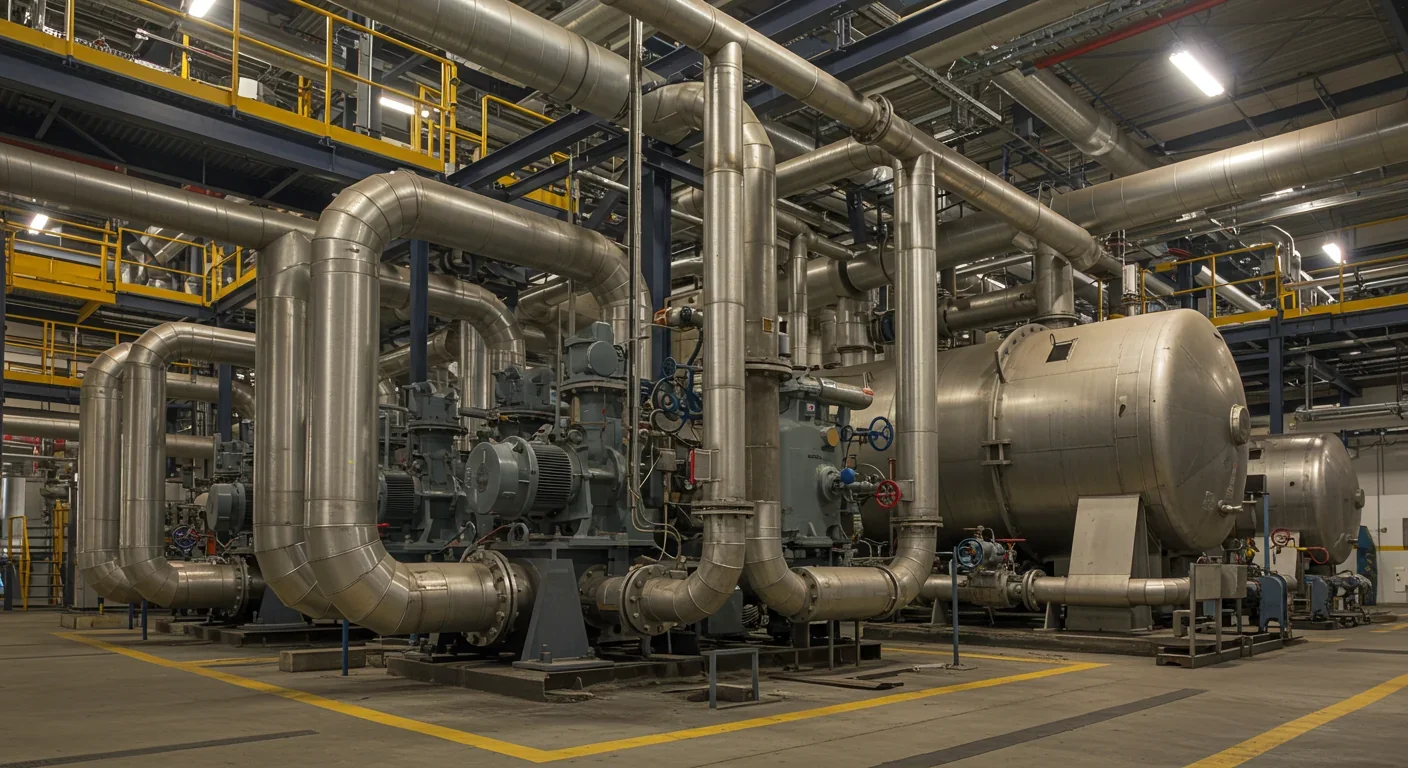
TL;DR: Revolutionary enzyme technology enables infinite recycling of polyester plastics without quality loss, breaking down waste into pristine monomers at low temperatures. Commercial plants launching in 2026 will process textiles and packaging at costs below virgin plastic, potentially transforming the circular economy.
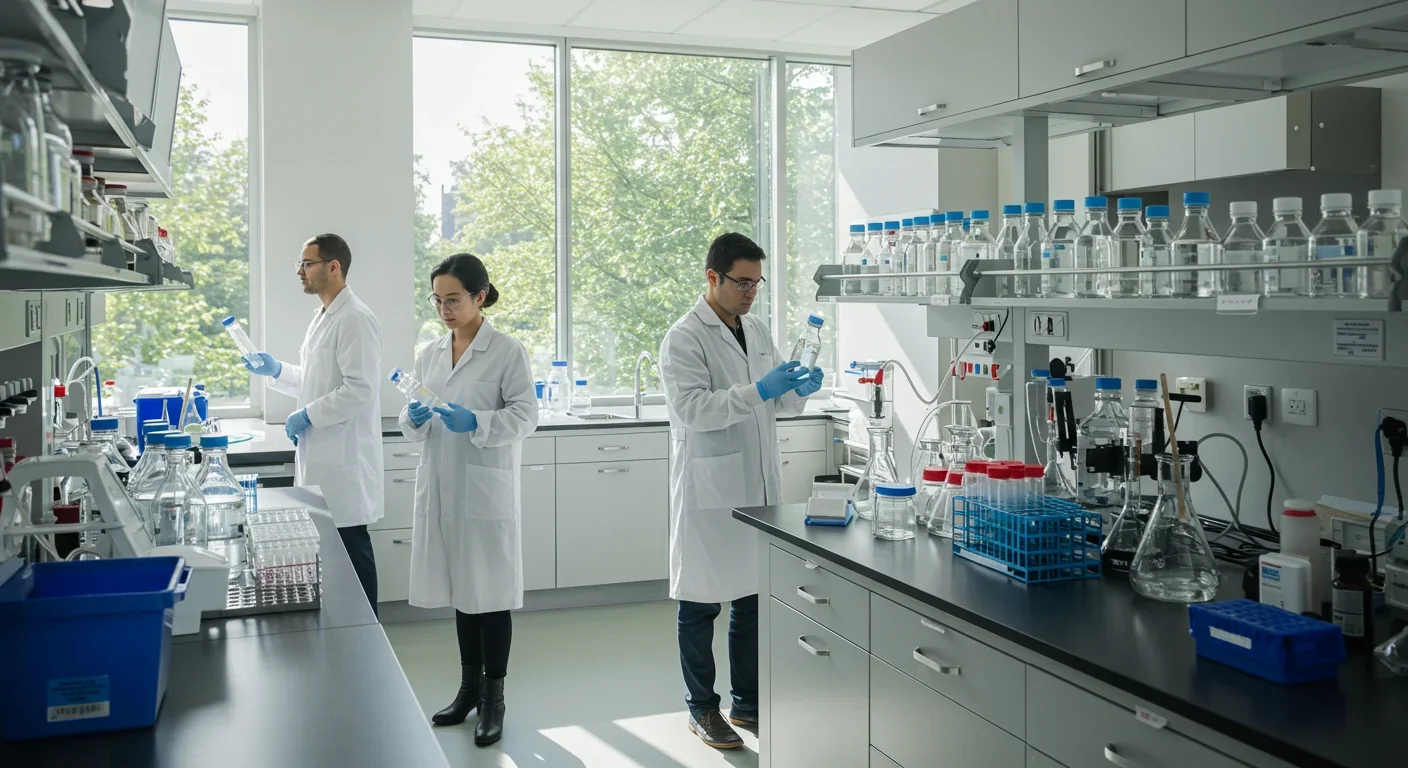
By 2026, a revolutionary factory in France will process 50,000 tons of textile waste annually—turning dirty, colored polyester scraps into material identical to virgin plastic. No quality loss. No downcycling. Just infinite recycling loops powered by engineered enzymes that break chemical bonds the way nature intended.
This isn't distant science fiction. Companies like CARBIOS have already produced the world's first food-grade bottles from 100% enzymatically recycled plastic, and major brands from Patagonia to PUMA are racing to incorporate these materials into their supply chains. After decades of incremental improvements in mechanical recycling and expensive failures in chemical methods, biology is finally delivering what the circular economy promised.
The breakthrough centers on a remarkable discovery: enzymes that evolved to digest plant material can be retrained to dismantle synthetic polymers at the molecular level. Unlike melting plastic or blasting it with heat and chemicals, these biological catalysts work at mild temperatures under atmospheric pressure, surgically cleaving the ester bonds that hold polyester chains together. What emerges aren't degraded fragments but pristine monomers—the exact same building blocks used to make virgin plastic.
At the heart of this technology lies a class of enzymes called PETases—proteins that catalyze the hydrolysis of polyethylene terephthalate through a precise three-step dance. The enzyme's active site features a catalytic triad of three amino acids (Ser160, Asp206, and His237) that work together like molecular scissors.
When a PET chain enters the enzyme's binding pocket, the serine residue launches a nucleophilic attack on the ester bond connecting terephthalic acid to ethylene glycol. Water molecules assist the reaction, breaking the carbon-oxygen linkage and releasing mono-2-hydroxyethyl terephthalate (MHET) as the initial product. A second enzyme, MHETase, completes the job by cleaving MHET into its constituent monomers: terephthalic acid (TPA) and ethylene glycol (EG).
The process is remarkably selective. PETases belong to the α/β-hydrolase fold family, sharing evolutionary roots with lipases and cutinases that naturally break down plant cuticles. But PETases possess a more open active-site cleft that accommodates the rigid aromatic rings of PET chains—a structural quirk that makes them uniquely suited for plastic degradation.
PETases use a catalytic triad of amino acids to break ester bonds in polyester chains, releasing pure monomers that can be repolymerized without quality loss—creating truly infinite recycling loops.
Laboratory experiments have shown that chimeric proteins linking PETase and MHETase outperform separate enzyme mixtures, suggesting that co-localized catalytic domains enhance overall efficiency. Researchers have created these fusion enzymes that keep both catalytic functions close together, reducing the distance that MHET molecules need to travel between enzymatic steps.
Recent advances in enzyme engineering have pushed performance to industrial viability. The engineered variant LCC-ICCG-C09, developed through computational protein design, operates at 68°C with double the efficiency of earlier versions. Its melting temperature sits 3.5°C higher than its parent enzyme, providing the thermal stability needed for large-scale processing.
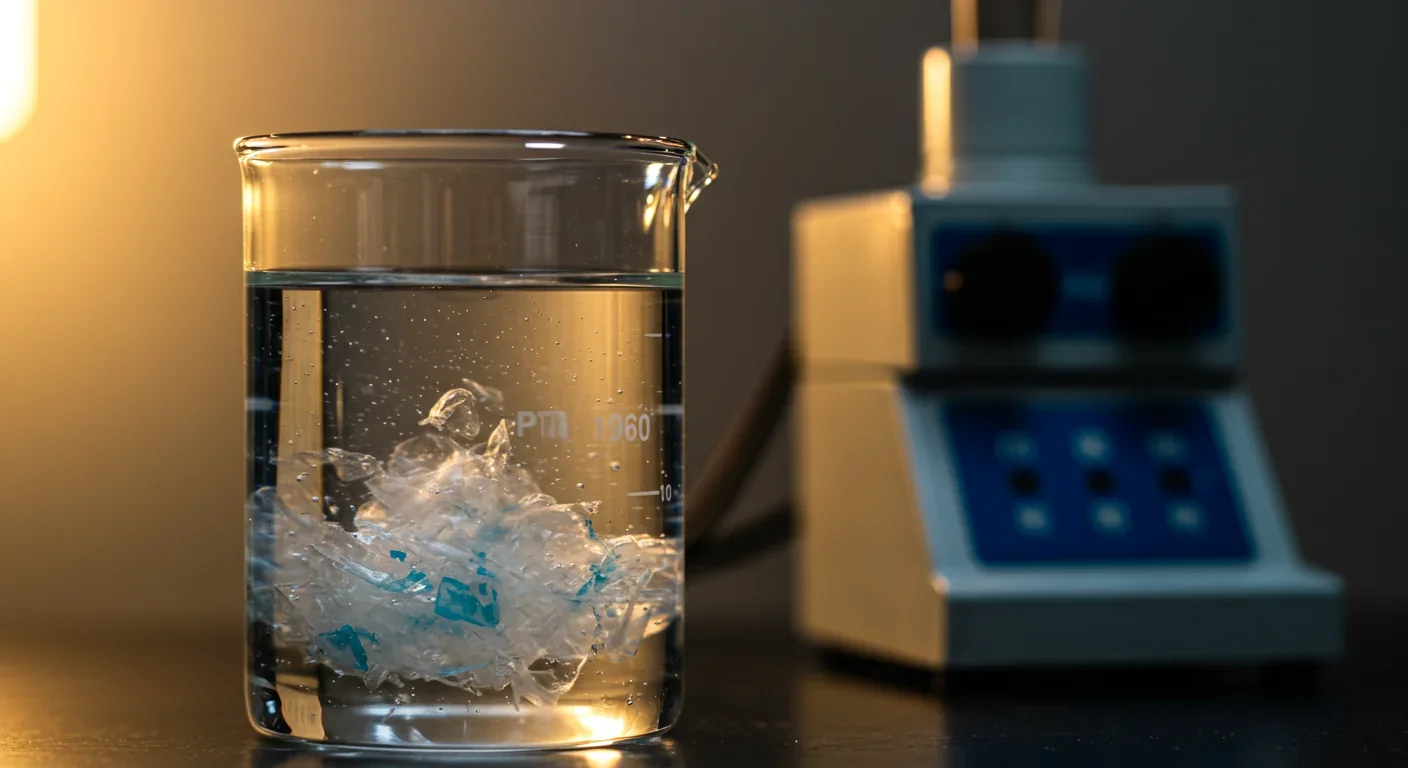
The origin story of enzymatic recycling reads like scientific serendipity meeting environmental necessity. In 2016, Japanese researchers analyzing microbial communities near a PET bottle recycling facility in Osaka discovered a bacterium they designated Ideonella sakaiensis strain 201-F6. This microorganism possessed something unprecedented: the ability to use PET as its sole carbon source.
The bacterium secreted two enzymes working in tandem—PETase and MHETase—that could break down PET films completely in six weeks at 30°C. While 75% degradation over 42 days wasn't fast enough for industrial use, it proved that biological systems could evolve solutions to synthetic materials invented barely 70 years earlier.
What made this discovery particularly striking was its timing and location. PET production began in the 1940s, meaning these enzymes evolved their plastic-degrading capabilities within roughly 70 bacterial generations—a blink in evolutionary time. The bacterium likely adapted from enzymes that originally broke down plant polyesters called cutin, which share similar ester linkages with PET.
"The discovery of PETase from Ideonella sakaiensis provides a potential solution to the world's amassing plastic; however, naturally occurring enzymes are limited in their degradation abilities due to instability, low activity, and expression levels."
— Wikipedia: PETase
The scientific community immediately recognized the potential. By 2019, researchers had solved 17 crystal structures of PETase, providing the detailed atomic maps needed for rational protein engineering. These structural insights revealed why PETase worked: its active site was more open than typical cutinases, allowing longer PET chains to thread through.
But natural enzymes had limitations. Wild-type PETase showed limited stability above 40°C, could be inhibited by its own reaction products, and worked far too slowly for commercial viability. The 2016 discovery was a proof of concept, not a solution. Turning biological potential into industrial reality required engineering.
The leap from laboratory curiosity to commercial technology came through directed evolution and computational protein design—essentially teaching enzymes to work harder, faster, and under tougher conditions.
One breakthrough came from the University of Texas at Austin, where researchers used machine learning to design FAST-PETase, a variant that could process 51 PET items within 24 hours at 50°C. The algorithm identified mutations that stabilized the protein structure while enhancing catalytic turnover, effectively creating an enzyme optimized for conditions that would destroy natural versions.
Japanese scientists took a different approach with PET2-21M, systematically adding mutations to a thermostable PET hydrolase until they achieved something remarkable: 28.6-fold higher activity than the wild enzyme, with the ability to depolymerize 95% of PET in 24 hours at 60°C. That temperature matters—it's hot enough to keep PET slightly softened, making it more accessible to enzymatic attack, but cool enough that the enzyme remains stable.
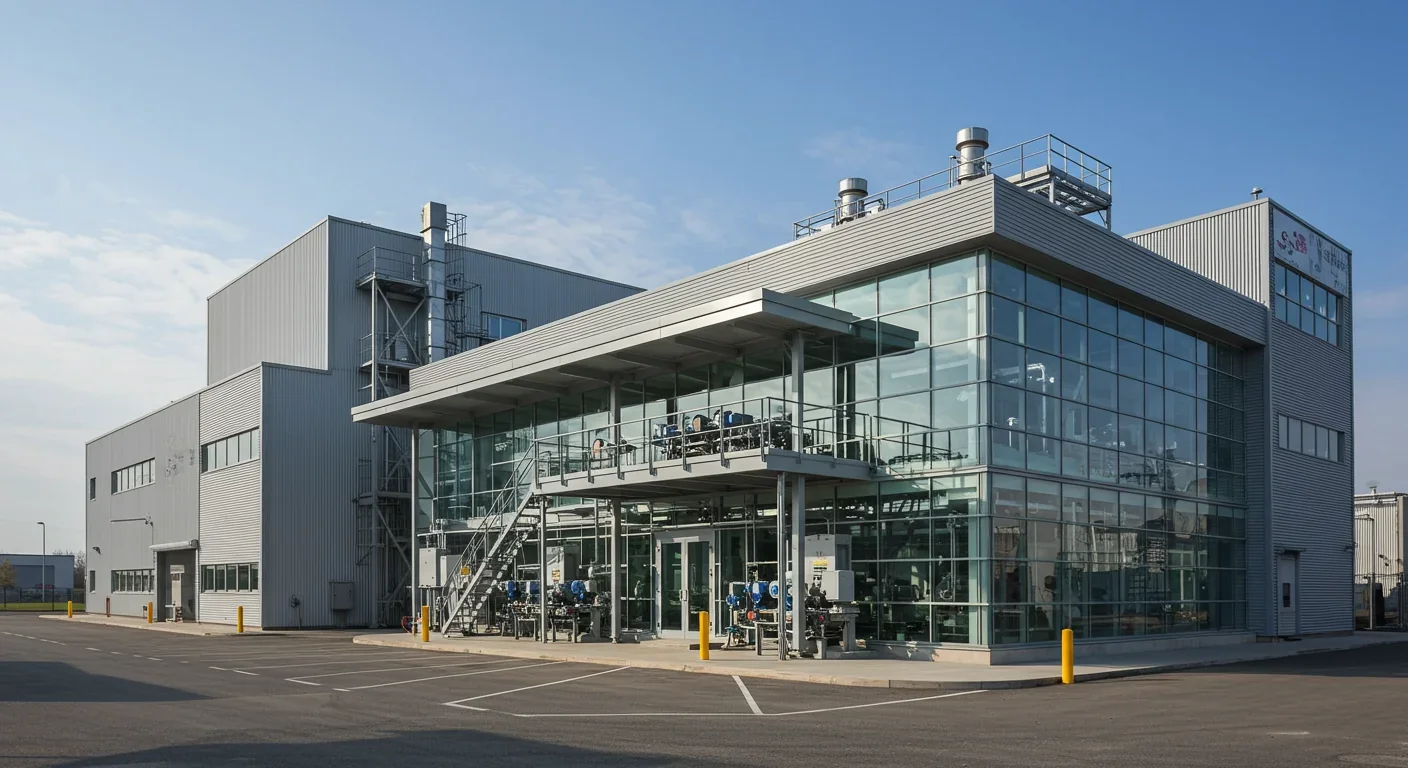
CARBIOS partnered with Novozymes, the Danish enzyme giant, to produce proprietary variants at industrial scale. Their approach combines enzyme engineering with process optimization, including pre-treatment steps that make PET more amenable to enzymatic breakdown.
One clever innovation involves pre-amorphization through extrusion and quenching. PET exists in both crystalline and amorphous forms—the crystalline regions are tightly packed and resistant to enzymatic attack, while amorphous regions have looser chain arrangements that enzymes can penetrate. By heating PET flakes and rapidly cooling them, researchers can reduce crystallinity, cutting depolymerization time from 50 hours to under 24 hours with high-performance enzymes.
Another breakthrough addresses product inhibition. As enzymes break down PET and release TPA and EG, these monomers can bind back to the enzyme's active site, blocking further catalysis. NREL's process uses recyclable ammonium bases to neutralize the reaction products, preventing inhibition while avoiding the accumulation of caustic waste streams that plagued earlier chemical recycling methods.
The real test of any recycling technology isn't whether it works in a beaker but whether it scales economically. Enzymatic recycling is clearing that hurdle.
CARBIOS operates a demonstration plant in France that's been processing two tons of PET waste daily since 2021, operating under low temperatures at atmospheric pressure. That daily throughput proves the process can run continuously, handling real-world waste streams with their inevitable contamination and variability.
NREL's pilot process achieves a closed-loop PET cost of $1.51 per kilogram—below the ~$1.87/kg price of virgin PET—while cutting energy use by over 99% compared to conventional chemical recycling.
The company has secured over €100 million in funding to construct the world's first commercial biorecycling plant in Longlaville, France, with commissioning planned for 2026. That facility will process 50,000 tons of waste annually—enough to produce material for millions of bottles and garments. CARBIOS has already signed letters of intent with companies in China, Turkey, and Spain, indicating global demand.
Rather than operating every plant themselves, CARBIOS plans to license the technology to PET producers worldwide. It's a decentralized model similar to how Coca-Cola doesn't own every bottling plant but provides the formula. This approach could rapidly scale the technology since existing PET manufacturers already have the polymerization equipment—they'd only need to add the enzymatic depolymerization front-end.
The economics are compelling. NREL's pilot process achieves a closed-loop PET cost of $1.51 per kilogram, below the ~$1.87/kg price of virgin PET from petroleum. That's the holy grail: recycled material that's cheaper than virgin while maintaining identical quality.
Energy consumption drops dramatically compared to traditional methods. While mechanical recycling requires high-temperature melting and chemical recycling demands extreme heat and pressure, enzymatic processes operate at 50-70°C at atmospheric pressure. NREL reports cutting energy use and caustic consumption by over 99% compared to conventional chemical recycling.
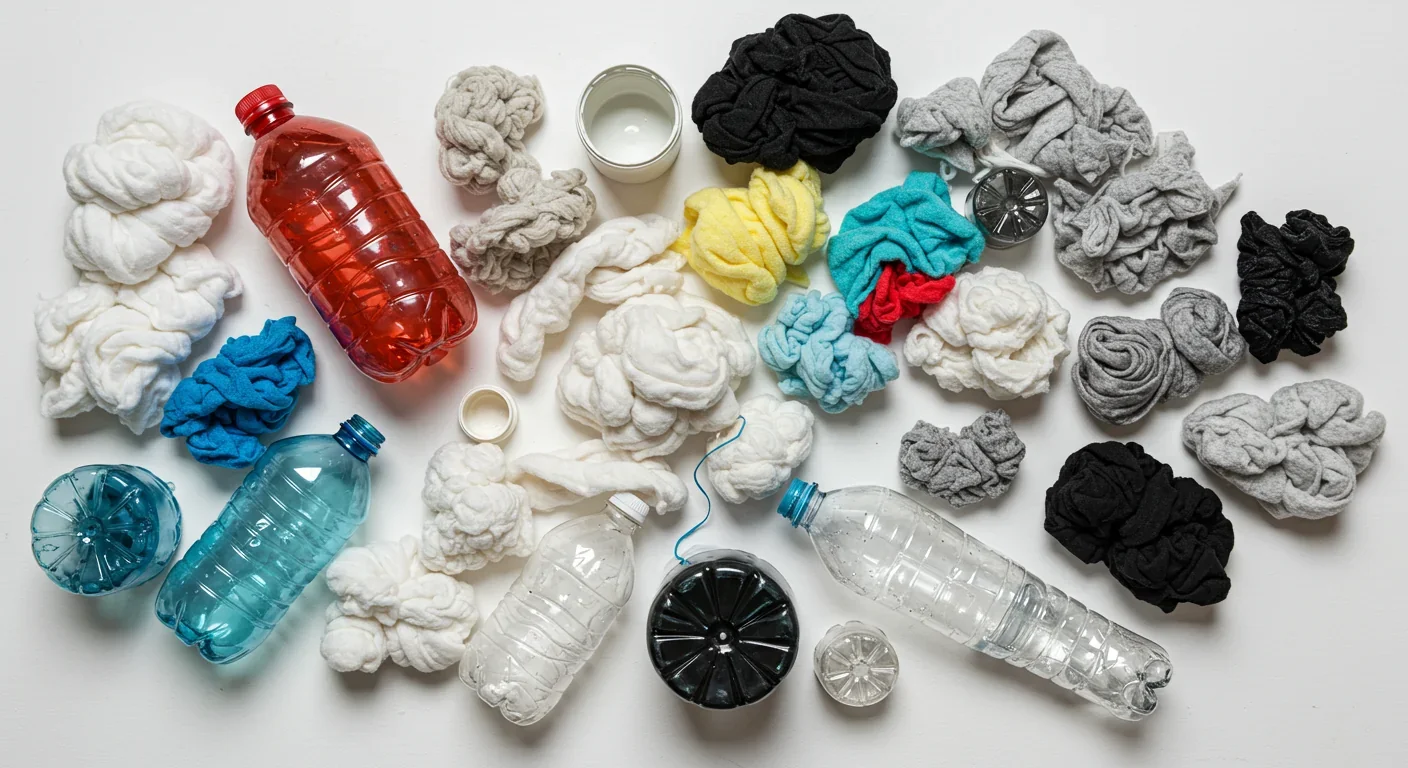
Mechanical recycling faces an insurmountable problem: polymer chains break during processing. Each time you melt and re-form plastic, molecular chains fracture into shorter segments. Shorter chains mean weaker material with degraded properties. That's why mechanically recycled PET gets downcycled into lower-grade applications like carpet fiber or fleece rather than going back into bottles.
The issue isn't just length. Mechanical recycling can't remove contaminants bound to or mixed within the polymer matrix. Colored bottles, multi-layer packaging, and textile blends are essentially impossible to recycle mechanically into food-grade material because you can't separate the different polymers or remove dyes at the molecular level.
Enzymatic recycling sidesteps both problems by taking plastic back to its monomeric building blocks. When enzymes cleave every ester bond in a PET chain, what remains are individual TPA and EG molecules—the exact same monomers used to synthesize virgin PET. Membrane filtration systems can purify these monomers to above 99% purity, removing dyes, labels, adhesives, and other polymers entirely.
Repolymerizing ultra-pure monomers produces PET that's indistinguishable from virgin material at the molecular level. There's no loss of intrinsic viscosity, no reduction in mechanical strength, no color degradation. CARBIOS demonstrated this by producing the first food-grade bottles from 100% enzymatically recycled plastic—bottles that passed every safety and quality standard that virgin PET must meet.
"Enzymatic recycling is forging a new narrative in the plastics saga. After years of underwhelming results from pyrolysis and chemical depolymerization, bio-engineered catalysts have sparked a vivid comeback."
— Srishti Gupta, Interesting Engineering
This creates what CARBIOS CEO Emmanuel Ladent calls true circularity: polyester that can be recycled up to 10 times without quality degradation. In theory, there's no limit—each recycling cycle returns the material to monomers, erasing any history of previous uses.
The technology also handles waste streams that stump other methods. CARBIOS partnered with apparel brands including On, Patagonia, PUMA, and Salomon to create the world's first garment made entirely from textile waste—a polyester shirt born from a heterogeneous mixture of colored fabrics that mechanical recycling couldn't touch.
Polyester dominates global textile production, accounting for over 50% of fiber used in clothing. Yet textile recycling rates hover around 1%. The reason is simple: garments are complex—blends of polyester and cotton, dyed in countless colors, adorned with buttons and zippers, often stitched with incompatible thread types.
Mechanical textile recycling produces low-quality filler or insulation. Chemical methods struggle with blends and consume enormous energy. The result is that 87% of textile fiber ends up incinerated or in landfills, even though polyester is theoretically infinitely recyclable.
Enzymatic recycling changes the equation because it's selective. PETases target ester bonds specifically, meaning they can break down polyester in a polyester-cotton blend while leaving cotton cellulose intact. The enzyme doesn't care about color—dyes remain in solution after depolymerization and get filtered out with other contaminants.
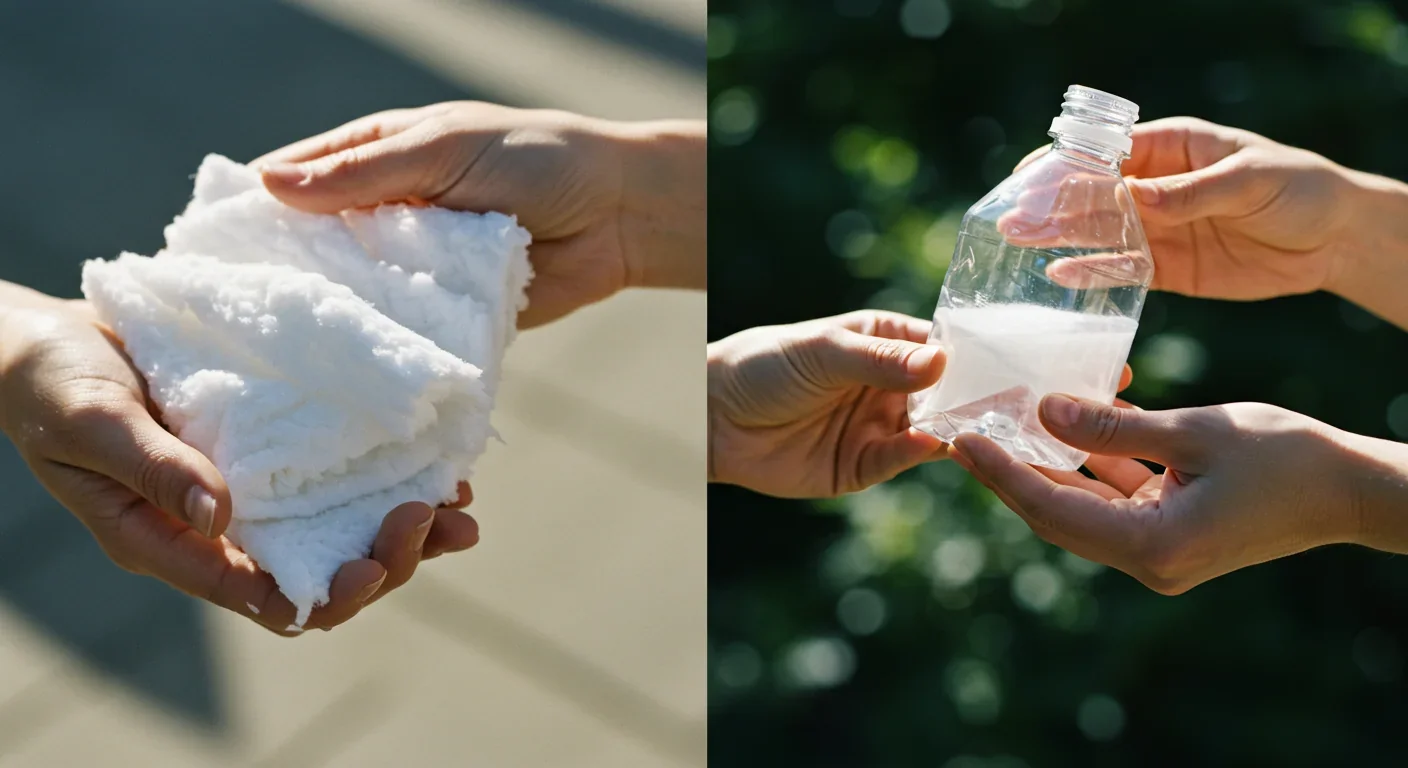
This selectivity enables true fiber-to-fiber recycling. CARBIOS has demonstrated the complete cycle: collecting used polyester garments, enzymatically breaking them into TPA and EG, purifying those monomers, repolymerizing them into PET, extruding new polyester fiber, and weaving it into fresh fabric.
Brands are paying attention. Salomon chose enzymatic recycling over mechanical and chemical methods because of its greater potential for emissions reductions, according to the company's sustainability lead. Patagonia, which has championed recycled materials for years, views enzymatic technology as the path to genuinely circular textiles.
Circ, another company in this space, produces regenerated polyester and lyocell fibers from textile waste at industrial scale. Their partnership with footwear brands has produced shoes incorporating textile-to-textile recycled fibers—products that maintain the performance characteristics of virgin material while dramatically reducing environmental impact.
The textile industry generates 92 million tons of waste annually, much of it polyester. If enzymatic recycling reaches even 20% of that waste stream, it would displace millions of tons of virgin polyester production, cutting the petroleum feedstock, energy consumption, and carbon emissions that come with synthesizing new material.
Despite impressive technical progress, enzymatic recycling faces real obstacles before it becomes the dominant method for polyester recycling.
Enzyme production costs remain high. Producing industrial quantities of highly engineered enzymes requires sophisticated fermentation facilities and purification systems. While solid-state fermentation using agricultural by-products could potentially reduce costs by up to tenfold, those methods aren't yet proven at commercial scale.
Reaction rates still lag behind ideal industrial timelines. Even with engineered enzymes achieving 95% depolymerization in 24 hours, that's slower than mechanical recycling's continuous feed systems. Enzyme immobilization on carriers like graphene oxide or magnetic nanoparticles can boost reusability and stability, but adds process complexity.
Feedstock preparation matters more than with mechanical recycling. While enzymatic processes handle contaminated and colored PET, the material still needs sorting, washing, and often pre-treatment to optimize enzyme accessibility. Building the collection and preparation infrastructure requires capital investment and coordination across supply chains.
Enzymatic recycling could process 20% of the textile industry's 92 million tons of annual waste, displacing millions of tons of virgin polyester production and dramatically reducing carbon emissions from synthetic fiber manufacturing.
Scale-up risks loom large. Many promising technologies work beautifully at pilot scale but encounter unexpected issues when reactors grow from 2 tons daily to 50,000 tons yearly. Maintaining consistent enzyme activity, managing heat dissipation, and ensuring complete monomer recovery at industrial volumes will test CARBIOS and competitors.
Regulatory approval for food-contact applications varies by region. While CARBIOS achieved food-grade certification in Europe, each market requires separate validation that enzymatically recycled PET meets safety standards. That approval process takes time and resources.
Economic competition from virgin PET remains challenging when oil prices drop. At $1.51/kg, enzymatic recycling undercuts current virgin PET prices, but petroleum price volatility could narrow or eliminate that margin. Long-term adoption requires either price stability or policy interventions like virgin material taxes or recycled content mandates.
The environmental case for enzymatic recycling rests on comparative life-cycle analysis. Manufacturing products from post-consumer recycled plastics reduces energy consumption by at least 79% and cuts greenhouse gas emissions by at least 67% compared to virgin production—and that's for basic mechanical recycling.
Enzymatic recycling should improve on those figures. Operating at 50-70°C versus the 260-280°C needed for PET polymerization cuts energy input dramatically. Eliminating caustic chemicals and high-pressure reactors reduces both operational costs and environmental hazards.
The technology also addresses microplastic pollution indirectly. By enabling infinite recycling loops without quality loss, enzymatic processes reduce the need for virgin plastic production from petroleum. Less virgin production means fewer petroleum extraction operations, less transportation, and less energy consumption across the supply chain.
Perhaps most significantly, enzymatic recycling could capture waste streams currently headed for incineration or landfills. Every type of PET waste—clear bottles, colored containers, opaque packaging, polyester textiles—becomes feedstock rather than pollution. That represents not just diverting waste but transforming it into resources.
The European Union's circular economy action plan sets a target of 55% plastic packaging recycling by 2030. Enzymatic recycling provides a technological pathway toward that goal for PET materials, which represent roughly 30% of plastic packaging by volume.
Europe leads in enzymatic recycling development, driven by aggressive circular economy policies and high waste management costs. France hosts both CARBIOS's demonstration plant and the upcoming commercial facility, supported by government grants and EU research funding. The Landbell Group, a major European waste management company, has committed to supplying 15,000 tons of PET flakes annually to CARBIOS starting in 2026.
Asia presents a more complex picture. Japan originated PETase discovery and continues robust research through institutions like the Institute of Molecular Science, which developed the PET2-21M enzyme. But commercial deployment lags Europe. China, the world's largest PET producer and consumer, has expressed interest—CARBIOS holds letters of intent from Chinese companies—but actual facilities remain speculative.
North America's National Renewable Energy Laboratory (NREL) has advanced enzymatic recycling science significantly, achieving the lowest reported costs and highest efficiency metrics. Yet commercial deployment in the U.S. faces headwinds from cheap virgin plastic prices and less stringent recycling mandates compared to Europe.
The technology holds particular promise for regions with limited mechanical recycling infrastructure. Rather than building traditional recycling facilities that struggle with contaminated feedstocks, developing economies could leapfrog to enzymatic systems that handle heterogeneous waste more effectively.
Within the next five years, enzymatic recycling will likely shift from promising technology to established industrial process—at least for PET. CARBIOS aims to license technology to over 100 plants worldwide, though that timeline depends on regulatory approvals, capital investment, and proving commercial viability.
The next frontier involves expanding beyond PET. Researchers are investigating enzymes that degrade polyurethanes, polyamides (nylon), and potentially polyethylene—though the latter's carbon-carbon backbone resists enzymatic attack far more than PET's ester linkages. Marine bacteria like Rhodococcus ruber show promise, degrading polyethylene up to 50% faster under wave motion than in still conditions, suggesting mechanical agitation might accelerate reactions.
For consumers and industry, the implications are straightforward: polyester products should increasingly carry expectations of infinite recyclability. That old fleece jacket or soda bottle isn't waste—it's a resource waiting for enzymatic processing. Fashion brands and packaging companies will need to design for this reality, minimizing non-polyester components that complicate enzymatic recycling.
Skills in bioprocess engineering, enzyme technology, and circular supply chain management will become increasingly valuable as the sector scales. Waste management professionals will need to understand enzymatic processing requirements—feedstock preparation, contamination limits, and logistics differ from mechanical recycling.
Policy makers face a choice: subsidize the technology during scale-up to accelerate deployment, or let market forces determine adoption speed. Given climate commitments and plastic pollution pressures, most governments will likely tilt toward support through recycled content mandates, research funding, or tax incentives.
The ultimate vision is a circular polyester economy where "recycling" means something radically different than today's downcycling. Imagine polyester molecules cycling endlessly—from bottle to textile to packaging to bottle—with quality maintained across hundreds of iterations. That's not science fiction. The enzymes exist, the process works, and the first commercial plants are under construction.
Biological solutions to industrial problems often seem too elegant to be true, but enzymatic recycling delivers on that promise. By harnessing proteins shaped by evolution and optimized by human ingenuity, we're finally building the infrastructure to match our rhetoric about sustainability. The plastic waste crisis won't vanish overnight, but for polyester at least, biology has provided the tools to close the loop.

Lunar mass drivers—electromagnetic catapults that launch cargo from the Moon without fuel—could slash space transportation costs from thousands to under $100 per kilogram. This technology would enable affordable space construction, fuel depots, and deep space missions using lunar materials, potentially operational by the 2040s.

Ancient microorganisms called archaea inhabit your gut and perform unique metabolic functions that bacteria cannot, including methane production that enhances nutrient extraction. These primordial partners may influence longevity and offer new therapeutic targets.

CAES stores excess renewable energy by compressing air in underground caverns, then releases it through turbines during peak demand. New advanced adiabatic systems achieve 70%+ efficiency, making this decades-old technology suddenly competitive for long-duration grid storage.

Human children evolved to be raised by multiple caregivers—grandparents, siblings, and community members—not just two parents. Research shows alloparenting reduces parental burnout, improves child development, and is the biological norm across cultures.
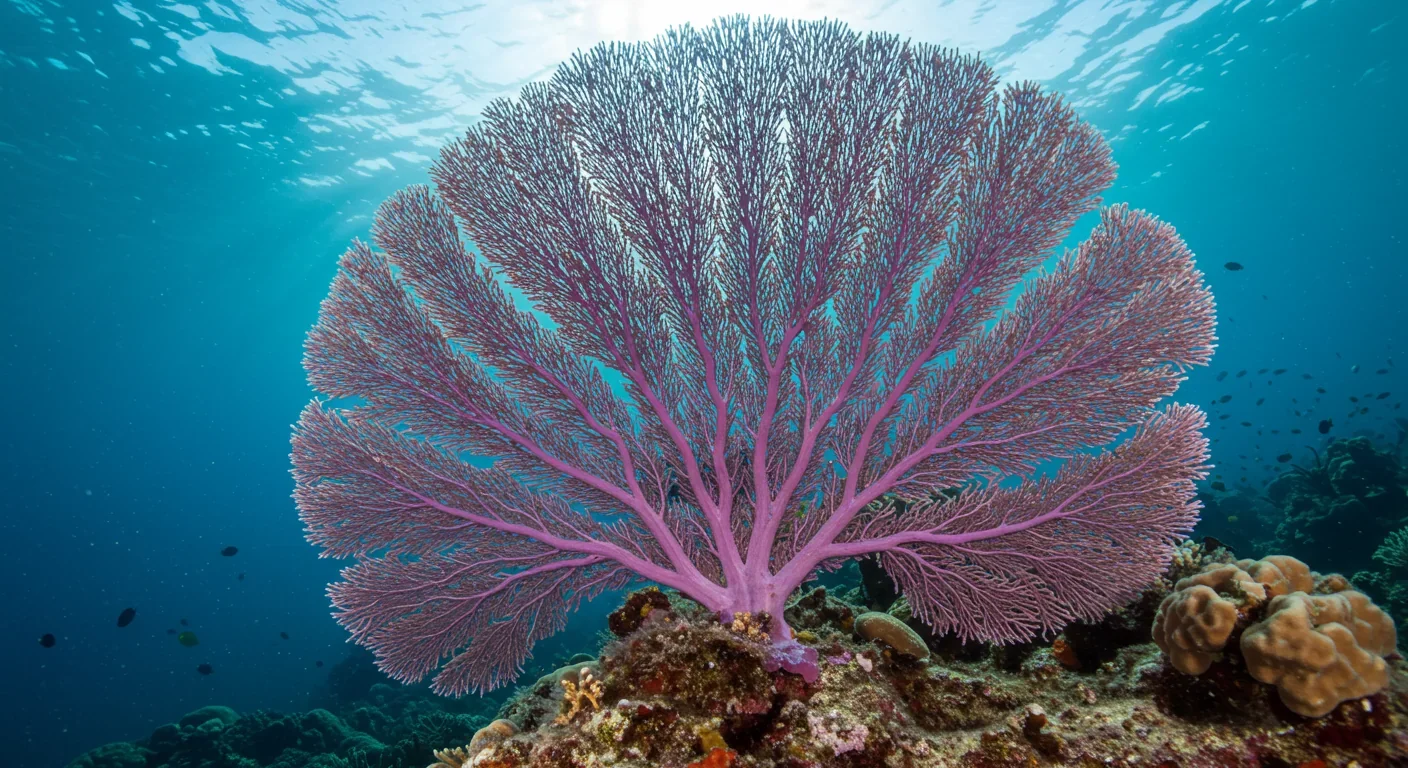
Soft corals have weaponized their symbiotic algae to produce potent chemical defenses, creating compounds with revolutionary pharmaceutical potential while reshaping our understanding of marine ecosystems facing climate change.

Generation Z is the first cohort to come of age amid a polycrisis - interconnected global failures spanning climate, economy, democracy, and health. This cascading reality is fundamentally reshaping how young people think, plan their lives, and organize for change.

Zero-trust security eliminates implicit network trust by requiring continuous verification of every access request. Organizations are rapidly adopting this architecture to address cloud computing, remote work, and sophisticated threats that rendered perimeter defenses obsolete.